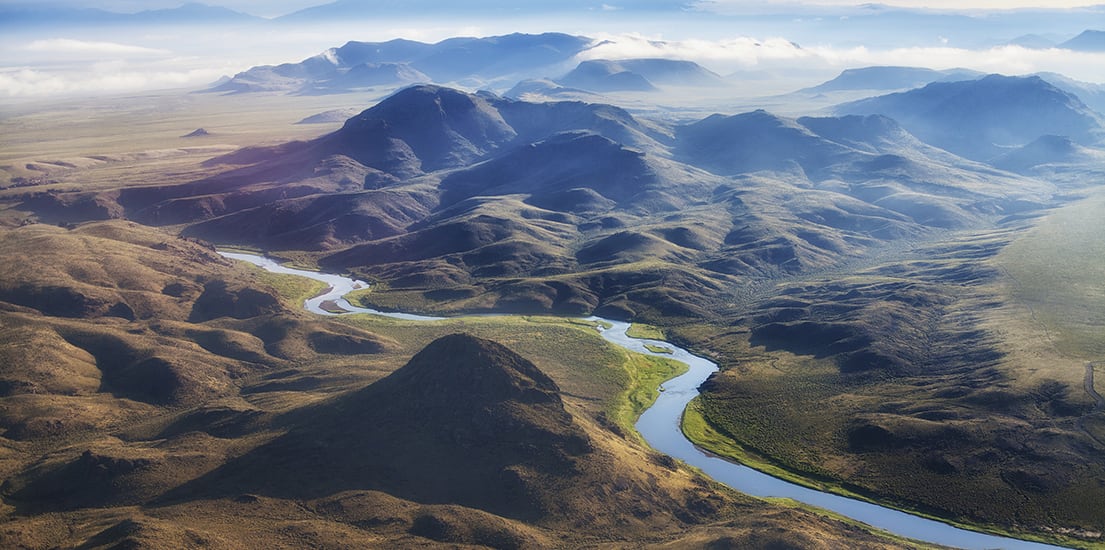"Keeping Rio Grande Lands Open for People and Wildlife"

This arcticle ran on October 4, 2017 online at Intermountain West Joint Venture.
As a kid growing up in the San Luis Valley, Brian Bechaver, now a district wildlife manager for Colorado Parks and Wildlife, had free run of his family’s ranch, plus the sagebrush and riverside cottonwood groves on neighboring ranches, too. Over several decades he’s watched familiar agricultural land go up for sale and end up in hands that might not continue the access-friendly neighbor practices of the past.
But at least a few of the ranches Bechaver roamed will always be open to everyone. In 2016, with the goal of protecting prime fish and wildlife habitat and improving public access, the non-profit Western Rivers Conservancy purchased the Brownie Hills and Olguin Ranch properties in the San Luis Valley.
Dieter Erdmann, the organization’s Interior West Program Director, said the Brownie Hills Ranch stood out for both its habitat and potential to provide public river access in a county where there’s almost none. Costilla County happens to be 99 percent privately owned and has the lowest fraction of public land in the state. Western Rivers Conservancy is transferring the Brownie Hills to Costilla County ownership, and Colorado Parks and Wildlife will help manage the land as a state wildlife area. The public will forever be able to use these soon-to-be public lands for hiking, riding horses, hunting, fishing, and access to the river.
“Getting this land into public hands is so important to this community,” said Ben Doon, Chief Administrative Officer for the Board of County Commissioners. “Given the diverse groups involved, there is strong and remarkable shared vision to secure public access to our area’s incredible natural resources.”
Doon said he has hiked around the Brownie Hills with his dogs and it’s a very remote area with a lot to explore. He said they are keeping the area in its current primitive status but not closing the two-track roads that are already established.
So many partners are behind the acquisition because they see the property as an invaluable asset to local, public open space. A $3.5 million grant from Great Outdoors Colorado’s lottery fund supported the purchase, which totaled 18,037 acres along four miles of the Conejos River and Rio Grande. The U.S. Fish and Wildlife Service is purchasing the Brownie Hills easement with support from the Land and Water Conservation Fund.
“Local people don’t have the ability or the resources to acquire places like this unless it’s through partnerships,” said Bechaver. “If you look at this area from a wildlife, geographic, or a geological perspective, it’s a unique place in the valley.”
Brownie Hills land is important for maintaining habitat connectivity in the Rio Grande’s headwaters. It’s one of the few remaining large, intact private parcels within the Bureau of Land Management’s 33-mile Rio Grande Natural Area, and there are other conserved private properties nearby.
Across the river from the Brownie Hills, the Olguin Ranch will be protected as open space and remain in irrigated agriculture thanks to Western Rivers Conservancy’s purchase of the ranch and a conservation easement that will be held by the Rio Grande Headwaters Land Trust. The land trust will acquire the easement using funding from the North American Wetlands Conservation Act and Great Outdoors Colorado lottery funding. This ensures the property continues to be working wildlife habitat in perpetuity.
Since the San Luis Valley is part of the Central Flyway for migratory birds, the property’s wetlands and riparian areas host Greater Sandhill Cranes and other waterbirds in the spring and fall. It’s also prime habitat for endangered Southwestern Willow Flycatchers and threated Yellow-Billed Cuckoos. Significant sagebrush uplands support species like Sage Thrashers. In the winter, it’s a haven for hundreds of deer and elk.
The San Luis Valley’s longstanding history and culture of land conservation helped make these land purchases possible. Without the leadership from Costilla County, broad support and engagement from local officials and landowners, all paired with assistance from the U.S. Fish and Wildlife Service, Bureau of Land Management, Colorado Parks and Wildlife, Rio Grande Headwater Agricultural Land Trust, and Colorado Open Lands, it wouldn’t have been possible.
“Western Rivers Conservancy was drawn to the Brownie Hills property because of its importance to the Rio Grande and its excellent potential to provide much-needed river access to the people of the San Luis Valley,” said Erdmann. “What’s making it happen are the partnerships we’re forging with local groups and federal agencies and the folks on the ground who are bringing tremendous expertise and energy to the table for the sake of this great river.”
